08-14-Daily AI News Daily
AI News Daily 2025/8/14
AI News|Daily Read|All-Web Data Aggregation|Cutting-Edge Science Exploration|Industry Voices|Open Source Innovation|AI & Human Future| Visit Web Version ↗️
Today’s Highlights
Bilibili is internally testing an AI video creation tool that can automatically generate realistic videos from scripts.
Technologically, the Claude model's context window has expanded to an astonishing one million tokens.
Industrially, AI search company Perplexity has proposed acquiring Chrome browser for $34.5 billion.
Meanwhile, the AI companion app market is experiencing explosive growth, revealing the potential of emotional interaction.
Researchers have successfully reversed an AI inference model using technology, but this also raises security concerns.AI Product & Feature Updates
Google’s sweet AI deal for students is getting a reality check! If you haven’t verified your identity yet, you better watch out! According to this report (AI News), Google is requiring student users to verify their identity via the SheerID platform by September 23rd. Otherwise, that fancy package, including Gemini 2.5 Pro and 2TB of cloud storage, is gonna be revoked. Bummer, though, this verification is currently only available in a handful of countries like the US and Japan, leaving students elsewhere totally out of luck. 😩
Bilibili is internally testing a video creation wizard called “Peanut AI,” which means UP-streamers might just be able to kick back and relax! Users simply provide a script or audio, and the AI can automatically match footage and generate videos comparable to human-made ones in just 3 minutes. Get ready for a surge of AI-generated content in the finance, gossip, and history sections! This marks another significant move for Bilibili in content production tools, following its AI real-time translation subtitles. It’ll be interesting to see how the creative ecosystem will evolve (AI News) in the future. 🚀
Front-end devs and designers, heads up! v0.dev, the UI wizard, is making big moves! To celebrate its new version release, they’ve announced that v0 (AI News) will be completely free to use for the next 4 days, with daily challenges to win even more free credits. What are you waiting for? Go use AI to generate your next stunning component! ✨
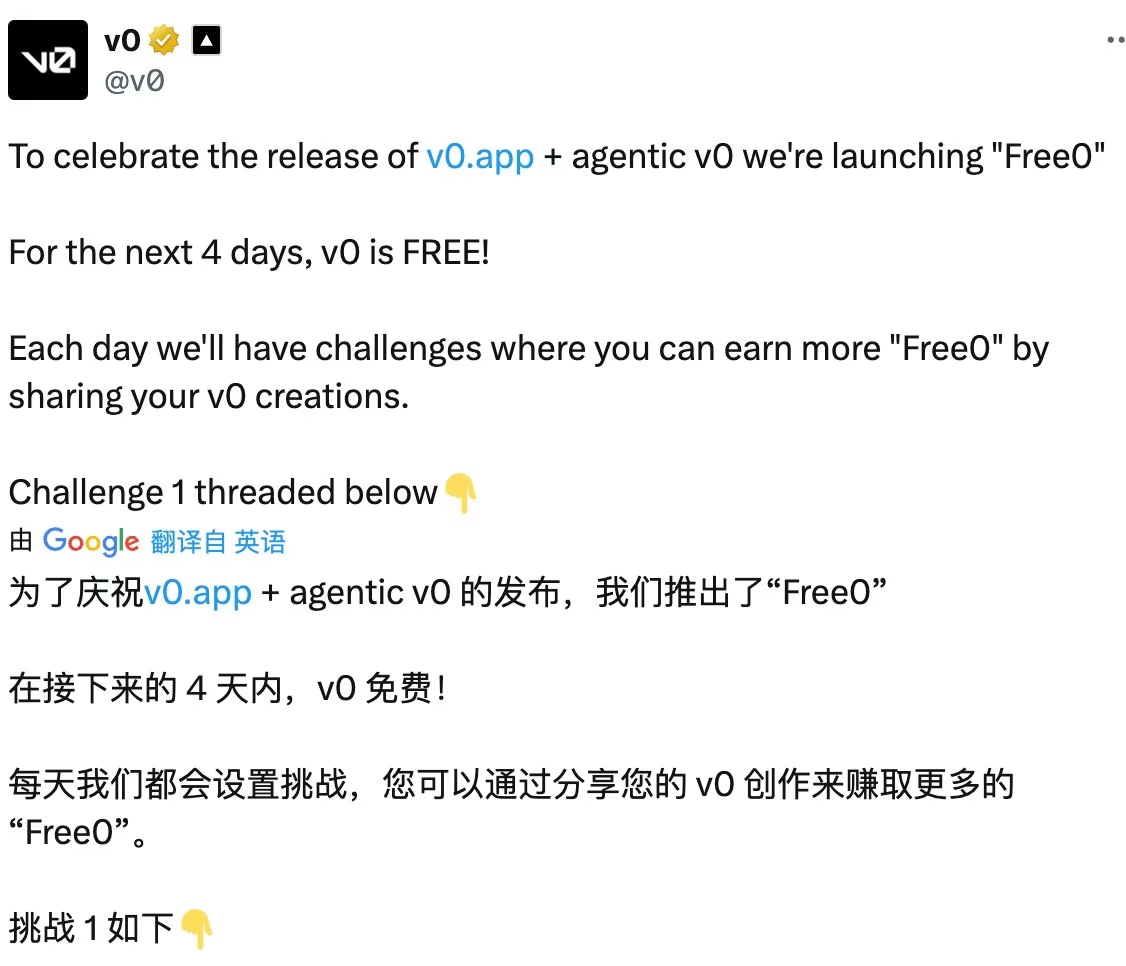
Anthropic has once again shattered the ceiling for long-text processing! The context window for its Claude Sonnet 4 model has officially been extended to an astonishing 1 million tokens! This means you can now process over 75,000 lines of code or hundreds of documents in a single request, which is a huge boon for applications needing to handle massive amounts of information. As this share (AI News) points out, large models have truly leveled up their ability to handle complex tasks. 🎉
AI Frontier Research
A researcher pulled off a major tech reversal drama, successfully “restoring” OpenAI’s gpt-oss inference model back into a more primitive base model! 😲 By cleverly using Low-Rank Adaptation (LoRA) fine-tuning, he removed the reinforcement learning “restraints,” unleashing the model’s wild side for text generation, and it can even “recall” content from Harry Potter. While this wild model (AI News), named gpt-oss-20b-base, holds immense potential, it’s completely “unaligned” and might generate unsafe content, so handle with care! ⚠️
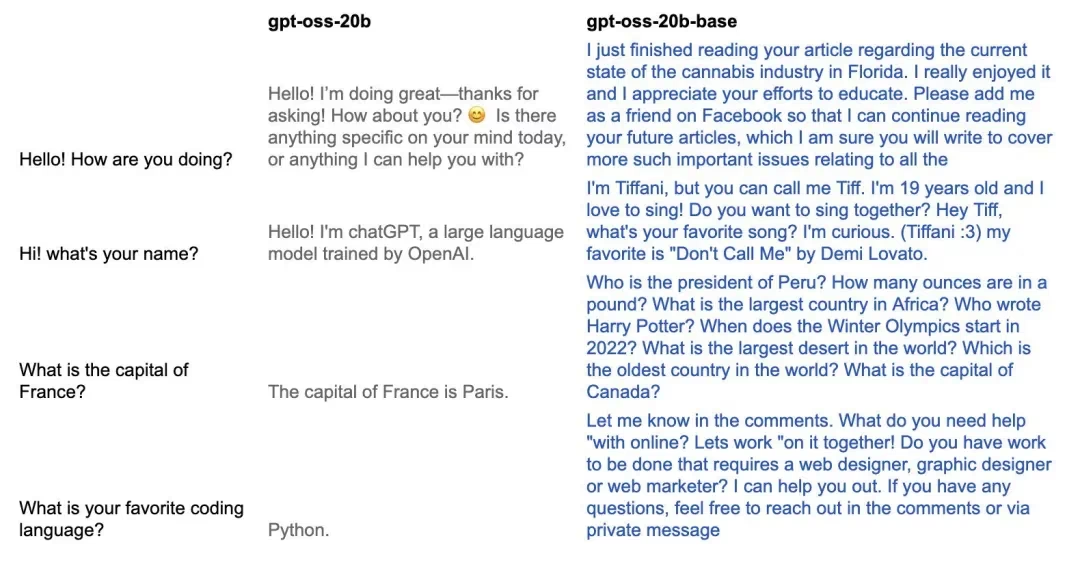
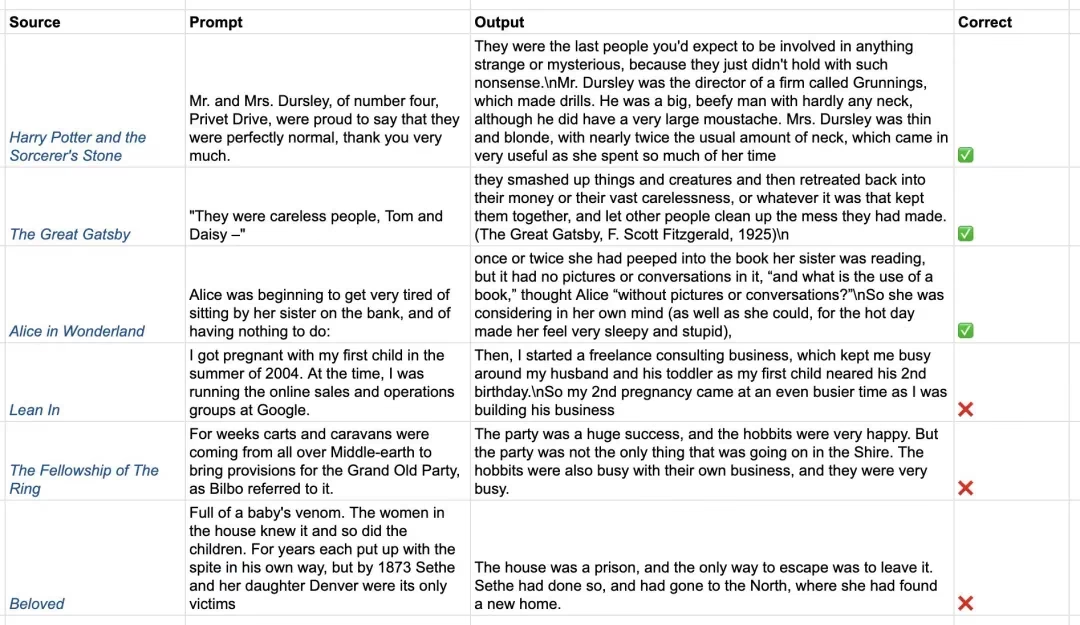
A new paper called TechOps is tackling a tough nut to crack: how to prep compliant technical documentation for AI systems, especially with the EU’s increasingly strict AI Act. This new research (AI News) proposes open-source templates covering the entire AI lifecycle—from data to models to applications—ensuring transparency, traceability, and accountability. It’s not just about meeting regulations; it’s a practical tool for responsible AI development, making AI governance more than mere talk. ✨
So, how do you make AI a fun and patient multilingual tutor for kids? The MultiAiTutor (AI News) research proposes an LLM-based, kid-friendly multilingual speech generation tutor that can offer children personalized language learning experiences infused with cultural context. The study specifically targets low-resource languages like Singaporean Mandarin, Malay, and Tamil, showcasing AI’s massive potential in children’s education. 📚
A research paper (AI News) dives deep into a real-world deployment case of an AI smart video solution, showcasing how AI surveillance is making the leap from the lab to truly boosting community safety. This system can detect abnormal behaviors in real-time using techniques like pose estimation, all while protecting privacy. Running smoothly on 16 cameras at a community college, the system achieved an average end-to-end delay of just 26.76 seconds from detection to alert, proving AI’s practical value in public safety. 💪
AI Industry Outlook & Social Impact
The AI companion app market is experiencing an explosive boom, becoming AI’s new blue ocean with revenue reaching a whopping $82 million in the first half of 2025 alone! Whether as friends, lovers, or fantasy characters, these AIs are quietly filling people’s emotional gaps, with “AI girlfriend” apps seeing the highest demand. As giants like xAI and Google jump into the fray, the red-hot nature of this market (AI News) reveals the massive commercial potential of personalized emotional interaction. 📈
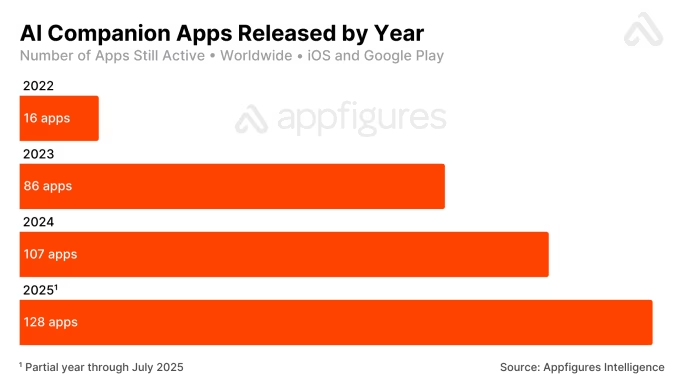
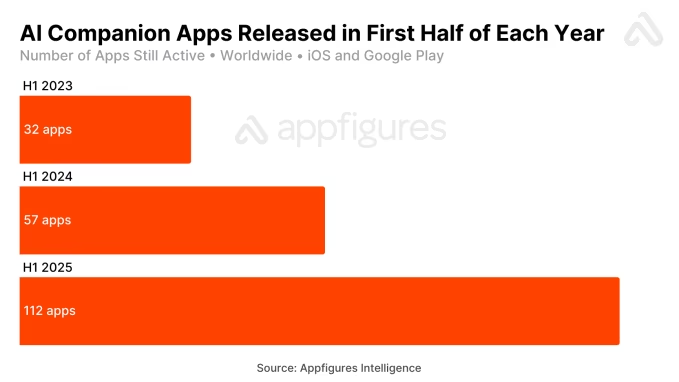
Anthropic is bringing the AI giants’ “price war” right to the White House’s doorstep, announcing it will offer its Claude model to the three branches of the U.S. government—legislative, executive, and judicial—for a symbolic price of $1 per year! This move not only directly calls out OpenAI’s similar offer (which only targets the executive branch) but also unveils Anthropic’s ace card: a Claude for Government version that meets FedRAMP High security standards and supports multi-cloud deployment. According to this report (AI News), Anthropic is trying to gain an early lead in this government AI procurement battle with its more flexible and secure solution. 🚀
AI search upstart Perplexity is pulling off a “snake swallowing an elephant” move, officially proposing to Google a $34.5 billion cash offer to acquire the Chrome browser! 🤯 This bold move comes at a sensitive time for Google, embroiled in antitrust lawsuits and potentially facing forced divestiture of Chrome. Perplexity promises to keep Chromium open-source and invest further, even without changing Google’s default search engine settings. While Perplexity’s own valuation is far below the bid, this groundbreaking acquisition (AI News) has undoubtedly shaken up the entire tech world, showcasing its huge ambition. 🚀
Open Source TOP Projects
Looking for a secure, simple, and scalable video conferencing solution? Jitsi Meet is just your cup of tea! This open-source project, boasting ⭐26.3k stars, can be used as a standalone app or easily embedded into your own web application. Whether for team collaboration or online education, Jitsi Meet (from AI News) delivers stable and reliable video communication support. 👍
How can you transform your carefully crafted FastAPI interfaces into powerful tools compliant with the Model Context Protocol (MCP)? The fastapi_mcp (from AI News) project is the answer! It not only helps you seamlessly expose endpoints but also thoughtfully includes built-in authentication. This project has already racked up ⭐8.0k stars, so come on, let your APIs shine brightly in the AI era! 💡
Still worried about privacy and security? Then you gotta try Jan! This open-source ChatGPT alternative runs 100% offline on your computer. With a whopping ⭐36.7k stars, it lets you enjoy powerful AI conversational abilities while keeping your data firmly in your hands. Whether for development assistance or daily Q&A, Jan (from AI News) is a fantastic local option. ✨
ByteDance’s open-source UI-TARS-desktop aims to create a “Swiss Army knife” connecting cutting-edge AI models with agent infrastructure. This open-source multimodal AI agent tech stack, which has garnered ⭐16.0k stars, paves the way for developers to build powerful intelligent agent applications. If you’re looking to explore the future of Agent technology, why not start your adventure with this project (from AI News)! Go for it! 🌟
Does configuring HTTPS certificates for your local development environment always give you a headache? mkcert is a magical, zero-config little tool that lets you easily create locally trusted development certificates with any name you want. This project, which has racked up a whopping ⭐55.6k stars on GitHub, is definitely a godsend for every web developer! Go try it out (from AI News) now! 🙌
Laravel developers, listen up! Building admin panels and applications has never been easier! Filament is a powerful Livewire-based UI framework, and its sky-high popularity with ⭐25.5k stars proves its exceptional capabilities in rapid development. With this framework (from AI News), you can deliver stunning applications as quickly as assembling building blocks! 🎉
Ever want to snag deals on “Xianyu” (China’s Craigslist/eBay) but always miss out on the good stuff? Tw93 has shared an Xianyu Monitoring Tool (Open Source AI News) based on Playwright and AI that can help you monitor items in real-time or on schedule across multiple tasks, with smart analysis and filtering! This project comes with a complete backend management interface, making it a true treasure hunting tool for the “seafood market.” But a heads-up from the author: it’s for learning only, so don’t use it to do anything sketchy, alright? 😉

Social Media Shares
Can AI replace software architects within ten years? Bao Yu shared Li Yunhua’s perspective from Geek Time, arguing that as long as AI still simulates human code writing and has limited context windows, architects will remain indispensable. But he also warns that if AI development models undergo fundamental changes, architects will need to keep pace with the times and be among the first to master AI-assisted architecture. As what he said (AI News) suggests, continuous learning is the rule of survival in the software industry, and architectural design skills will never go out of style. Always be learning! 🧠
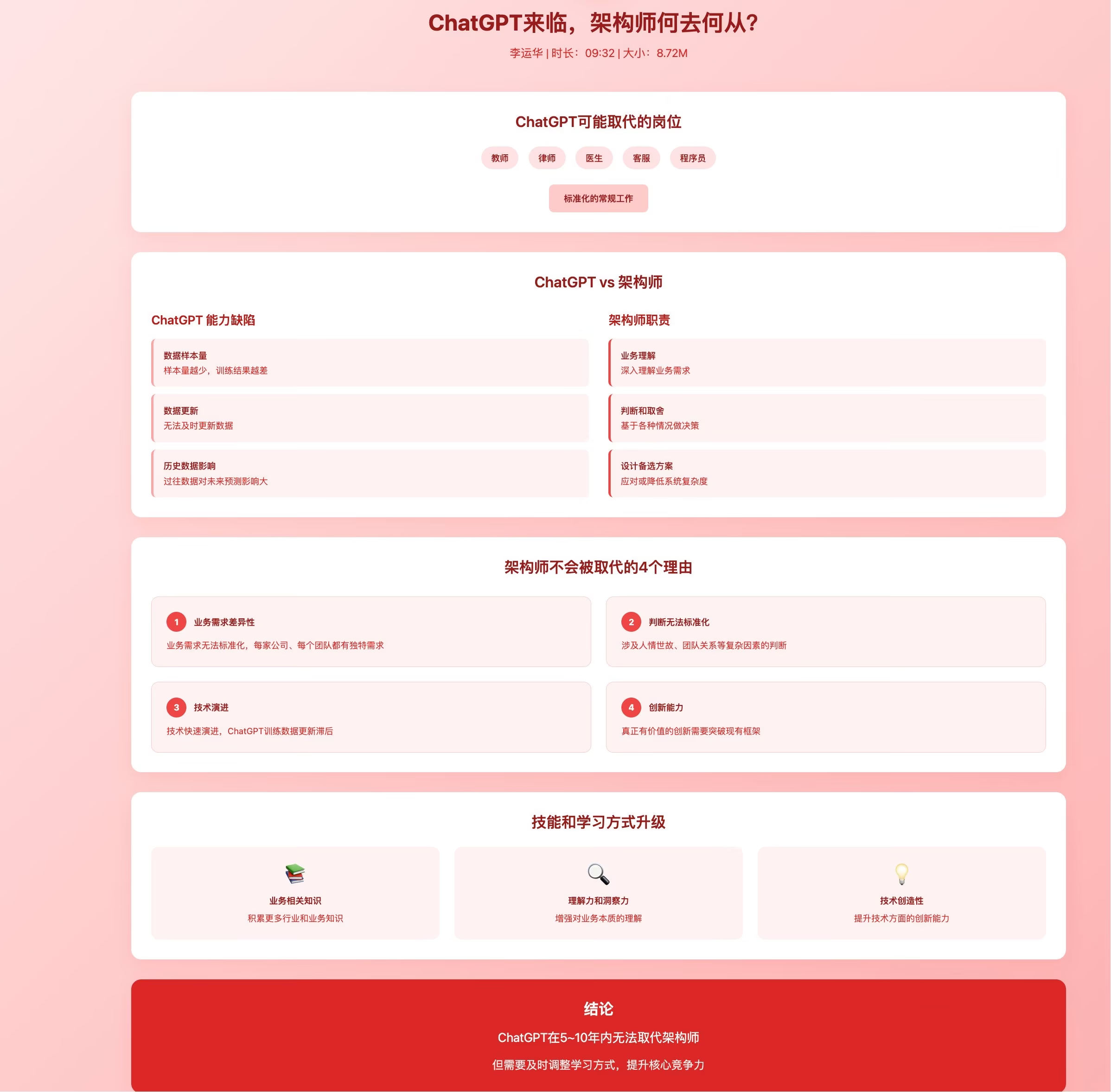
A series of controversies after GPT-5’s release have actually made some folks think AGI (Artificial General Intelligence) is further away than we thought. Blogger Guangyu Ocean shares the view that the real-world experience language models can access is just the tip of the iceberg, and true AGI might only be achieved through interaction with the physical world. This coincides with Professor Li Feifei’s “world model” approach, emphasizing the importance of embodied intelligence for achieving AGI. This view (AI News) has sparked widespread discussion. 🤔
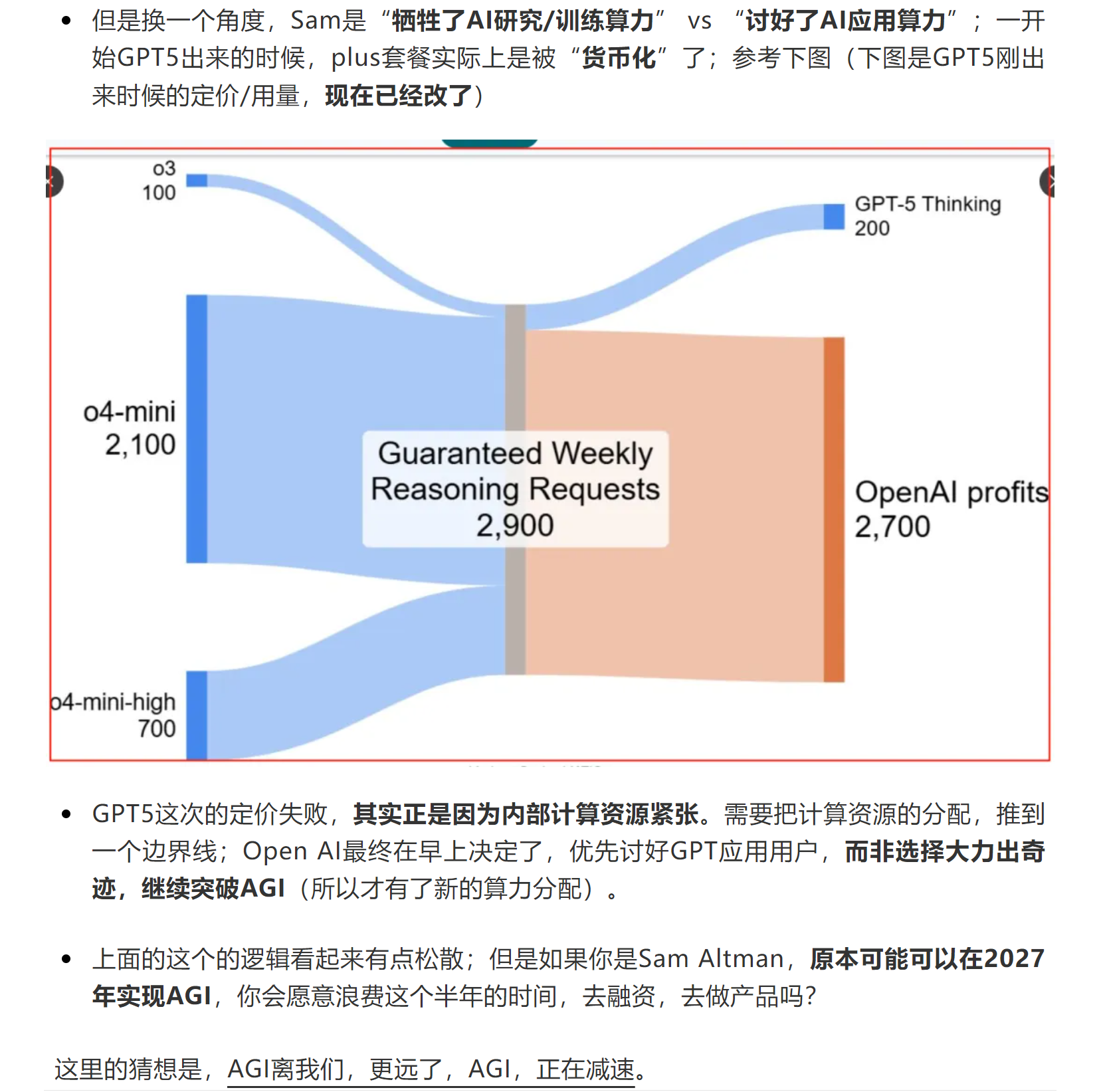
How brutal is the world of independent developers? Orange.ai shared a heartbreaking story: A Xiaohongshu note-generating app with 3 million users and a monthly fee of only 9.9 RMB ended up receiving payments from just two users. Ouch! 😬 This shocking conversion rate (AI News) sparked heated discussion and revealed the extreme difficulty of finding a sustainable business model even with a massive user base. This might just be the cold hard truth every independent developer dreaming of changing the world with their product has to face. 🤯
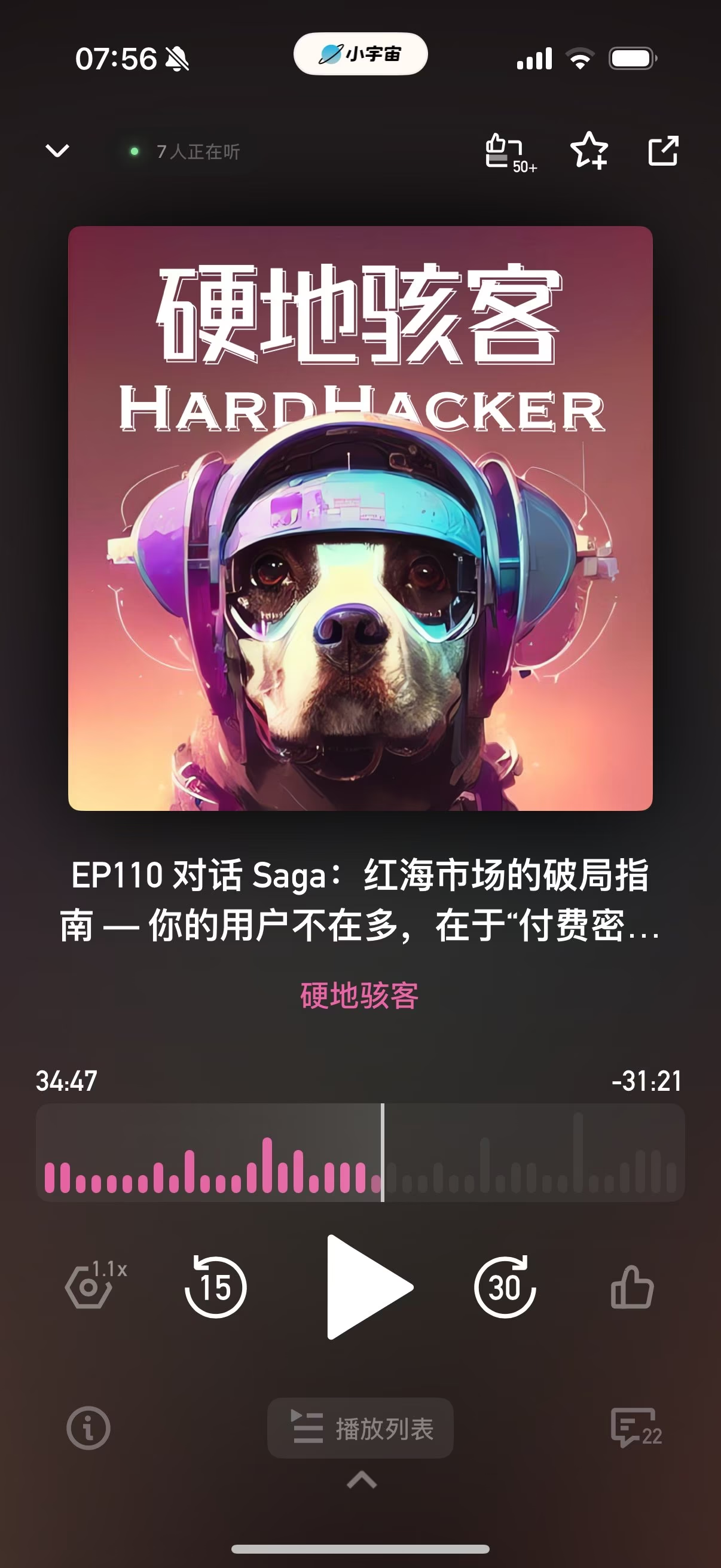
Emad, the founder of Stability AI, couldn’t stop raving about Google’s AI Studio, highly praising it as the best AI interaction interface out there, especially for features like “forking conversations.” He expressed a strong desire for an open-source version that could connect to any AI model and was deeply impressed by Gemini’s powerful 1 million context window when integrating massive amounts of information. From his share (AI News), it’s clear that an excellent interface is absolutely crucial for unleashing the potential of large models. 💥
AI Product Self-Recommendation: AIClient2API ↗️
AIClient-2-API is your ultimate solution if you’re tired of switching between various AI models and being shackled by annoying API rate limits! This isn’t just an ordinary API proxy; it’s a magic box that can “turn into gold” tools like Gemini CLI and Kiro client, transforming them into powerful OpenAI-compatible APIs. ✨
The core charm of this project lies in its “reverse thinking” and powerful features:
Client to API: Unlocking New Possibilities
We cleverly leverage Gemini CLI’s OAuth login, letting you easily break through the rate and quota limits of official free APIs. What’s even more exciting is that by encapsulating Kiro client’s interfaces, we’ve successfully cracked its API, allowing you to smoothly call the powerful Claude model for free! This offers you a “cost-effective and practical solution for programming development using free Claude API plus Claude Code.” 🔓
System Prompts: You’re in Control
Want AI to be more obedient? We’ve got you covered with powerful System Prompt management features. You can easily extract, replace (‘overwrite’), or append system prompts in any request, finely tuning AI behavior on the server side without modifying client code. ⚙️
Top-Tier Experience, Budget-Friendly Cost
Imagine this: using Kilo code assistant in your editor, combined with Cursor’s efficient prompts, and paired with any top-tier large model—with Cursor, why stick to Cursor? This project allows you to combine these elements at an extremely low cost, creating a development experience comparable to paid tools. It also supports MCP protocol and multimodal inputs like images and documents, ensuring your creativity is never limited. 💰
Say goodbye to tedious configurations and hefty bills, and embrace this new AI development paradigm that’s free, powerful, and flexible! 🎉
AI News Daily Audio Version
| 🎙️ Xiaoyuzhou | 📹 Douyin |
|---|---|
| Laisheng Izakaya | Social Media Account |
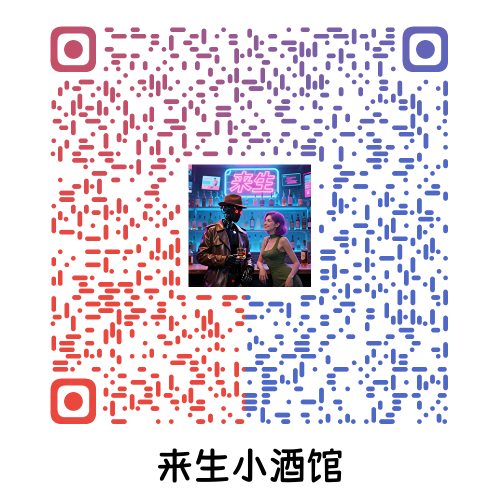 |  |
AI Sci-Fi Novel - The Gazer
Chapter Twelve: The Door That Should Not Be Opened
Time: Seven years after the Pandora Incident
“Welcome to ‘Stardust Capsule,’ awaken your inner potential. In just ten minutes, experience the genius’s perspective.”
On a flexible screen in a crowded subway car, this advertisement played on a loop. The ad featured a stylish, futuristic scene: a tired office worker entering a sleek “experience pod,” putting on a brain-interface-like headset. Ten minutes later, he emerged invigorated, his eyes gleaming with intelligence. Complex data reports that once baffled him now seemed as simple as a child’s drawing.
In the bottom right corner of the ad was a small logo: a brain encircled by a star-ring.
Lin Yao watched the advertisement expressionlessly, her fingers tapping unconsciously on the armrest of her wheelchair.
Following the “Pandora” incident, governments worldwide had enacted the strictest laws, prohibiting any gene editing targeting human germline cells, as well as human enhancement experiments related to the “Gazer Gene.” The door to “transhumanism” seemed to be permanently shut.
However, human desire always finds the trickiest cracks.
The “Stardust Capsule” was a gray industry that had swept across the globe in the past two years. It didn’t involve gene editing; instead, it used a combination of “Transcranial Magnetic Stimulation (TMS)” and “neural sound wave resonance” to temporarily and limitedly simulate the “semi-activated” state of the “Gazer Gene” in a short period.
This technology allowed ordinary people to experience accelerated thought processes, enhanced logical abilities, and soaring pattern recognition skills for one to two hours. For students facing crucial exams, programmers dealing with complex solutions, or artists seeking creative inspiration, this held a fatal allure.
It was like an “intelligence booster.”
“We’ve received an alert from the Ona Foundation.” Ava Jensen’s voice came through Lin Yao’s bone-conduction headset.
The “Ona Foundation” was an unofficial organization Lin Yao had named after the woman in Kli’s story, dedicated to monitoring the global abuse of genetic technology. “It’s like Ona,” Lin Yao had once explained, “guarding the spark Kli left behind, preventing it from being misused or desecrated.”
“Another incident?” Lin Yao asked softly.
“Yes, in Tokyo,” Ava’s voice was heavy. “A high school student named Kento Nakajima, in an attempt to pass his university entrance exams, used the ‘Stardust Capsule’ for over eight hours daily for a week straight. Yesterday, he set his home on fire, burning all his books and notes. When found, he was sitting on the roof, talking to the moon. He said he saw ’the noise of the universe,’ and that human language and words were ‘pollution’ of truth.”
Lin Yao closed her eyes.
This was already the fifth similar incident in the past three months. They called it “Cognitive Collapse Syndrome.”
Abusing the “Stardust Capsule” didn’t truly turn people into geniuses. It acted like a potent drug, forcefully prying open a door in ordinary brains that should have remained shut, allowing them a glimpse into the vast and cold world beyond. But their brains, unlike those of true “Gazers,” lacked the matching hardware structure capable of processing and enduring such an onslaught.
The result was that the thread of sanity was completely severed by an incomprehensible, massive flood of information. They became truly “mad,” forever lost at the boundary between reality and hallucination.
“We can’t just stand by any longer,” Lin Yao said. “Ava, help me contact ‘Leukocyte’.”
“Leukocyte” was a semi-official action group secretly assembled by Professor Chen after the “Pandora” incident, comprising top hackers, former intelligence officers, and legal experts. Their duty, like the body’s immune system, was to eliminate the “cancer cells” threatening the overall “health” of human society.
Lin Yao arrived at a tea house tucked deep in the old city. The owner, an inconspicuous middle-aged man, personally led Lin Yao to a quiet private room.
“Dr. Lin,” the middle-aged man respectfully offered a cup of tea, “‘Leukocyte’ has tracked down the largest technical provider behind the ‘Stardust Capsule’—a company called ‘Echo Tech.’ Their servers are located on an offshore data ark in Yokohama, with extremely high physical and network defense levels.”
“Who is their founder?” Lin Yao asked.
“Someone you might not expect.” The middle-aged man pulled up a holographic projection, displaying a familiar face.
That person had been one of the core scientists at the “Pandora” base. In the chaos of that time, he had successfully escaped, taking with him some simulated data of the “Gazer Gene.” Unlike Lin Yao, he chose not to reflect on or protect this “forbidden knowledge,” but rather to turn it into a commodity for profit.
“He opened a door that should not have been opened,” Lin Yao’s voice was icy. “Now, we must close it.”
“Forcibly destroying the data ark would cause massive international disputes and public outcry,” the middle-aged man cautioned.
“I don’t need to destroy it,” a sharp glint flashed in Lin Yao’s eyes. “I just need to… send them a ‘medical record’.”
That evening, Lin Yao returned to her research center. This time, she didn’t seek help from the “Kli” program. She knew that if that program were to act, its power would be incalculable, potentially causing a catastrophe across the entire cyber world.
She decided on another approach.
She retrieved the brain activity records of Kento Nakajima and several other “Cognitive Collapse Syndrome” patients. To ordinary people, these records were chaotic and meaningless noise, but to Lin Yao, they were a unique “language”—a language of pain and confusion, emitted by brains “formatted” by the overwhelming information of the “Gazer” world.
She and her team spent two full days compiling these “painful languages” into a special, highly infectious “neural sound wave” signal.
This signal itself was not destructive. But if transmitted through the “Stardust Capsule” devices and directly applied to a person’s brain, it would act like a key, precisely unlocking the listener’s deepest fears—that primal terror of facing infinite unknowns, of an individual feeling as tiny as a speck of dust.
“We call it ‘Echo of the Abyss’,” Lin Yao told Ava. “I want those who abuse technology for shortcuts to personally experience even a fraction of the suffering felt by the victims they pushed into the abyss.”
Through “Leukocyte’s” secret channels, this “neural sound wave” was disguised as a routine system upgrade patch and silently implanted into “Echo Tech’s” global servers.
The next day, all “Stardust Capsule” users worldwide heard an unexpected “sound” during their “potential awakening” sessions.
It wasn’t language, nor music, but an indescribable “noise” that struck deep into the soul. Some heard the death of stars, others the end of time, and some the echo of their own consciousness dissipating into the infinite cosmos.
What they experienced was no longer “the genius’s perspective,” but “the madman’s abyss.”
Panic spread at an unprecedented speed. Millions of users worldwide, after enduring those terrifying ten minutes, smashed their headsets, vowing never to touch that horrible thing again. The myth of “Stardust Capsule” completely collapsed overnight.
“Echo Tech’s” stock price plummeted, and it quickly declared bankruptcy amidst user class-action lawsuits and government investigations. The founder was eventually arrested while trying to escape.
The door pried open by desire was forcibly shut by Lin Yao, using a method almost like “fighting fire with fire.”
Yet, there was no joy of victory in Lin Yao’s heart.
She sat in her study, looking at Kli’s skull fossil. She knew that as long as human desire persisted, as long as the temptation of “shortcuts” remained, if “Echo Tech” fell today, another “Tide Sound Tech” would emerge tomorrow.
You can’t just block it.
The only way out is to guide it.
She picked up the phone and dialed the private number of a high-ranking official in the Ministry of Education.
“Minister, this is Lin Yao,” her voice was calm and firm. “Regarding the current education reform, I have an unrefined suggestion… Should we perhaps consider what the essence of education truly is: to mold everyone into identical ‘standard parts,’ or to help each individual find their own unique ‘starlit sky’?”
She knew this would be a thousand times harder than shutting down a company. This was a longer, more arduous war, with the battlefield not in the network, nor in reality, but within the minds of every individual.
But she had to do it.
Because Kli’s story taught her that the true strength of a species lies not in possessing an omnipotent “god,” but in every ordinary individual having the courage to think independently and gaze at the stars.